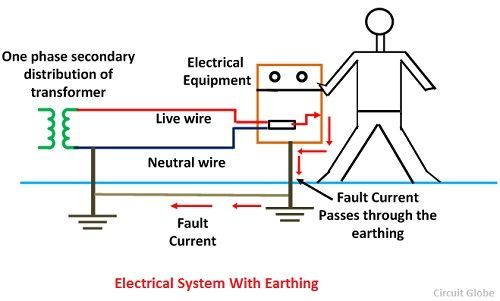We have been using various electrical appliances in our household having such socket plugs as shown above. The upper pin is called an earth pin while the lower two are live and Neutral. But have you ever wondered why the earth pin looks so different than the other two pins? If you had, here's the answer.
An earth pin is used to discharge any electric current flowing through the metallic enclosure of an electric appliance due to some internal fault or loose connection to the earth. The current flowing through the metallic enclosure is taken up by an earth wire in the appliance and is sent to earth through the earth pin in the socket.
Now in no way, the earth pin should be inserted in live or neutral hole on the socket because in that case, current would flow through the earth pin to the appliance and also will result in burn-out as well as insulation breakdown. That's why, the earth pin is made thick or different in dimension than the other two pins so that even if someone tries to push an earth pin to the live wire hole or junction in the socket, they couldn't.
The earth pin is also made longer than other two pins. This is done so that when an operator connects the appliance to an electric socket, the earth pin comes in contact first than the other two. Due to earth pin connection first, any fault persisting within the appliance due to energy storing elements like Capacitor or other is discharged first and then voltage is applied.
In this way, the operator safety is assured. Some people say that as earth pin carries more current, it is made thicker which isn't the true reason.
I hope you liked the post. Please share and comment your views below.
Thanks.



Very nice info dear friend, god bless you.
ReplyDeleteThank you so much.
Delete